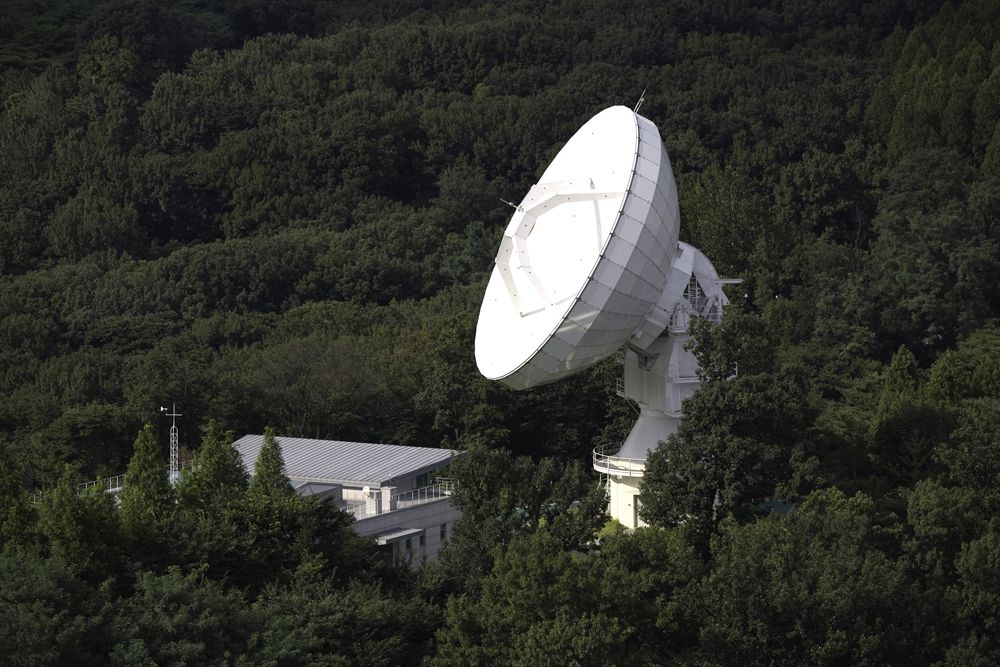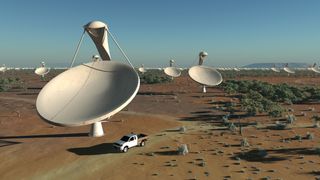Telescopes Team Up to Form 5,000-Mile-Wide Mega-Scope

Radio telescopes in Australia and South Korea have linked up for the first time, forming a mega-instrument roughly 5,000 miles (8,000 kilometers) across.
The transcontinental scope should have roughly 100 times more resolving power than NASA's Hubble Space Telescope, researchers said. It continues Australia's astronomy partnership with Asia; the country has also made similar linkups with Japan and China over the years.
"This is another step in Australia's ongoing collaboration with Asia in the field of radio astronomy," Philip Diamond, astronomy chief at Australia's national science agency, known as CSIRO (Commonwealth Scientific and Industrial Research Organisation), said in a March 15 statement.
Five telescopes were involved in the new linkup. Three of them are Australian, two in the state of New South Wales and one near Hobart, in Tasmania. The two Korean scopes are in the capital, Seoul, and Ulsan, a city in the southeast of the country, researchers said. [The World's 10 Biggest Telescopes]
The five radio dishes observed the same target — a galaxy 3.5 billion light-years away known as J0854+2006 — simultaneously for five hours. Their data was streamed in real time, at a rate of 64 megabytes per second, to Curtin University in Western Australia, where it was processed on the fly.
Researchers were pleased with the results.
"We were observing at a high frequency, which can be challenging for this technique, but the experiment worked extremely well," said CSIRO's Chris Phillips, who organized the tests.
Sign up for the Live Science daily newsletter now
Get the world’s most fascinating discoveries delivered straight to your inbox.

The linkup also demonstrated the sorts of techniques and technologies that will be required to make the Square Kilometer Array a reality, researchers said. The SKA, a future mega-scope with an estimated price tag of 1.5 billion euros (nearly $2 billion), will connect 3,000 separate dishes, each about 50 feet (15 meters) wide.
The SKA's receptors will be arrayed in five spiral arms extending out at least 1,864 miles (3,000 km) from a central core. (The "square kilometer" refers to the total collecting area of the receptors' dishes, not how much ground they cover.)
SKA officials have narrowed the location of this central core down to two nations: Australia or South Africa. CSIRO scientists hope Australia's success with the Korean and other Asian telescope connections put the Land Down Under in the lead.
"Australia has many decades of experience with these long-distance linkups," Diamond said. "And we are committed to scientific partnerships with countries in our region and elsewhere — another reason why Australia would be an excellent choice as SKA host."
SKA management is expected to choose a site sometime this year. Construction is slated to begin in 2016, with the array becoming fully operational in 2024.
This story was provided by SPACE.com, a sister site to LiveScience. Follow SPACE.com for the latest in space science and exploration news on Twitter @Spacedotcom and on Facebook.












